by Raizel Liebler
This discussion of GD & T.O.P is part of a series of posts about gender and sexuality in K-pop. The introductory posts are here and here.
Why start with G.D. (G-Dragon) and TOP? Because these lifelong friends are emblematic of the ways that K-pop as a genre offers more flexibility for gender and sexuality for men than for women. This essay is the first of the specific K-pop artists in the series, because unlike any of the female performers, I didn’t need to be hyper-aware about unintentionally slut-shaming the male artists in my descriptions of them. We know very little about the real lives of kpop stars, considering how constructed their personas are, so these essays are about their public-facing selves – not about what their actual real-life gender or sexuality preferences/orientations/statuses are.
TOP is, vocally, an odd combination of Yogi Bear and Ja Rule – with the fashion sense of Carlos D from Interpol plus constantly changing hair colors (Blue! White! Pink!).

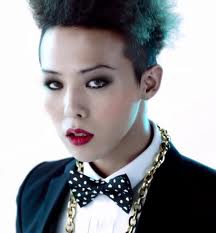
Together, they not only collaborate within BigBang, but have collaborated on a side project – with interesting gender and sexuality politics, mostly revolving around the trademark of the Playboy bunny. The claim by GD and TOP’s record company was that the use of the Playboy trademark as a cover image (and theme) was merely coincidental – instead a victory symbol. This was belied by the overall thematic use of these two guys as playboys, complete with dancers with bunny ears and tails. And the references to being “the official pimp” and “older women wish they could meet [him] just once.” The overall playboy image – with these two as a homosocial unit – “for the ladies” continues throughout the album.
This album also had three (!!!) videos banned by Korean censors, but not for (possible) trademark infringement. Strangely, “Turn it Up” wasn’t banned for continued use of the lyric “monkey magic” or implied shooting, but for indirect advertising (AKA name-dropping). “Knock Out” was banned for use of slang that could destroy the national psyche (and the implication was that it was too sexual slang, such as the line “making flowers that don’t bloom, blossom.”). “Don’t Go Home” was banned because it implies … the Sexy Time.
http://www.youtube.com/watch?v=Q7df4G5iQqI
An example of how GD deliberately plays with gender occurs in the video for Crayon. Appearing mostly in a Wonder Woman –themed bathrobe, as he sits on the couch with his boys, the lyrics talk about attractive women … and then the woman on the screen turns around … and is GD. But there is no ew, disgust from the guys – just the refrain from the Joker – “why so serious?”
Earlier, GD and T.O.P were part of a parody-remake of Coffee Prince, a Korean drama where a girl pretends to be a boy (and spoiler – the guy wants her, even when he thinks she is also a guy). In this parody, GD and TOP play the lovers, with the humor directed at BigBang recreating this story – and how over the top GD is at acting, not the idea of them playing romantic partners (at least until the last ten seconds). If new to Korean dramas, a full body contact hug is the equivalent of a first kiss, which does take place during the remake. There are full-on kisses, filmed like in the original – and the line “I don’t care if you are a guy or an alien – I love you!”
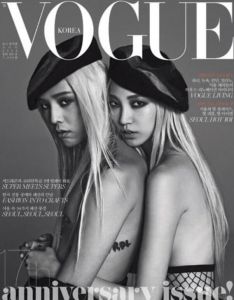
But would GD’s gender blurring be accepted within an American context now? I doubt it that U.S. music companies would be willing to promote GD – because of the overall stereotypes of Asian (and Asian-American) men. PSY didn’t mess with gender norms in his two popular (in the U.S.) songs and indeed without the overall K-pop context, it seems like PSY is only reinforcing gender norms. Perhaps TOP’s approach would work better for an American audience – but only if he laid off on the pink, something that does not seem likely considering his hair, eyebrows, performance clothes, and clothes in ads have all been pink recently (and often).
What about within the context of Korean music? Perhaps GD is just seen as some troublemaker, but more likely the overall “pretty boy” vibe in K-pop helps make the gender line-blurring acceptable. And considering that members of K-pop groups, like all other South Korean male citizens, will join the military for about two years before the age of 35, regardless of how “pretty” male k-pop stars are it does not limit their ultimate nationalistic proof of masculinity.


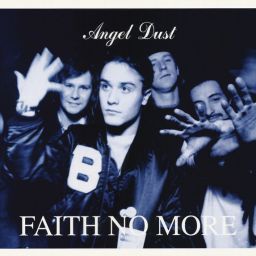
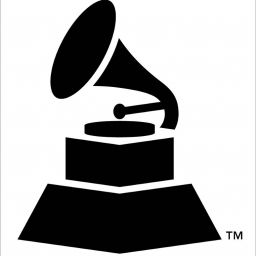
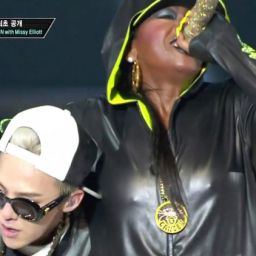
[…] – Pretty Boy, Punk Boy, Bad Boy: GD and T.O.P […]